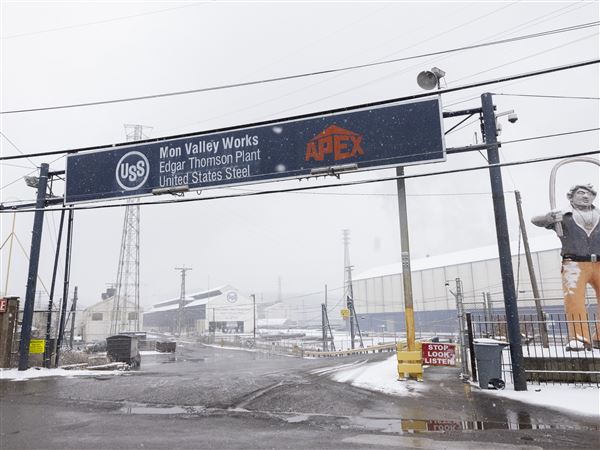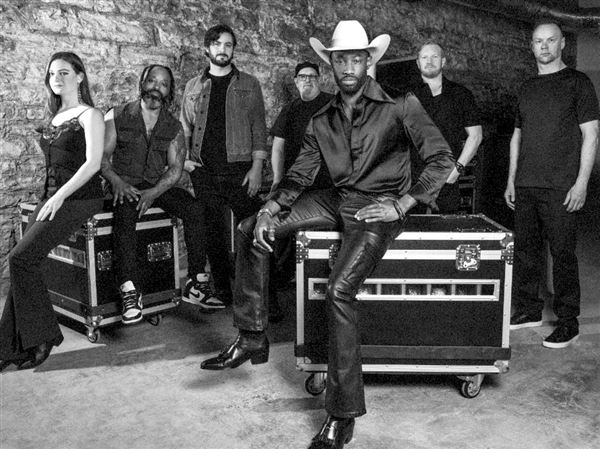You don't have to look to the stars to see how America's space program has touched your daily life. Look at your cell phone, your tennis shoes, your tool belt, your computer or television.
Daniel Lockney, editor of Spinoff, a NASA publication since 1976, makes it his job to inform readers of the benefits of space technology, from medicine to industry to entertainment.
"When NASA was founded in 1958," Mr. Lockney said, "Congress said, 'You can have this money for space exploration, but the money that goes up in space has to come back down in some practical and tangible forms. And we'd like to know what they are.'
"One of the goals of space exploration is to discover these new inventions and new technologies."
He also spends much of his time policing information, dispelling myths ranging from scissors and smoke detectors to Velcro and Tang, the preferred orange soft drink of man's early space missions.
"People were drinking Tang before we went into space," he said.
But much of what has been technologically achieved since the start of the space program -- such as computers and the miniaturization of electronics -- can be credited, at least partially, to that reach for the moon.
"The first integrated circuit -- the forefather of the modern microchip -- was built by Texas Instruments but funded by the Apollo program and the Air Force's Minuteman Missile Project," Mr. Lockney said. "They developed it, but the customer was NASA.
"A lot of the work is contracted out. NASA retains the usage rights, and the company retains the intellectual property rights and [is] able to create a commercial item. That's for the greater good of the economy. Everybody benefits."
The Dustbuster is a prime example, he said. Other things, such as the small, lightweight, rechargeable, battery-operated power tools so common today? Maybe not so much.
"Black and Decker had offered [the public] a cordless drill two years before NASA," Mr. Lockney said. "But NASA did work with Black and Decker, and the collaboration did lead to a stronger, longer-lasting battery."
How about those thermometers that are inserted in your ear nowadays and take your temperature in seconds? The technology was initiated by scientists who wanted to measure radiation from stars and planets. And doesn't the bottom of your tongue appreciate it.
How about the padding in the helmets worn by your favorite six-time Super Bowl champion football team? Well, that's memory foam, a visco-elastic, temperature-sensitive material that adjusts to the body weight and temperature of the user for complete comfort and support. First designed for airline seats and flight helmets, you may better know it commercially as the stuff in Tempur-Pedic mattresses.
Speaking of football, have you been watching ESPN's "SportsCenter" lately? You see those panoramic views it has of plays from all angles? That is based on robotic gigapan camera technology software used to create images of the Mars landscape from digital photos taken by space probes.
"That's really cool, and it's out of Carnegie Mellon University," Mr. Lockney said. "The robotic arms of the Mars rovers, and the software that stitches all these digital images together. These are now the 360-degree panoramic features used on Web sites for new cars, real estate and hotels, where you can take a virtual tour."
You probably know about "the space-age technology" used to develop scratch-proof lenses, composite golf clubs, high-density batteries, blue-blocking ultraviolet sunglasses, the computer mouse and freeze-dried food.
But how about infant formula?
"In the 1980s, [researchers were] working to use algae to clean water and recycle air and perhaps use as a food source during long-duration space flights," Mr. Lockney said. "During the experiments, they discovered a unique nutrient that previously had been found only in breast milk. Today, that nutrient is marketed in 95 percent of all baby formula sold in the U.S. and countries around the world."
Why, space research is part of the fabric of society, including the design and material for certain types of sports wear, ranging from the sports bras to temperature-control clothing to the swimsuits worn by every gold-medal winner in the 2008 Beijing Olympics.
And the white peaks in the roof of the David L. Lawrence Convention Center? "That is NASA's spacesuit material," Mr. Lockney said. "It's stronger than steel, pound-for-pound, but lighter. It's beautiful, and it allows light in, so it saves electricity. And it's more durable than a standard roof."
Mr. Lockney said NASA is constantly collaborating with private companies to share its resources. For example, the space agency builds a wind tunnel, but then allows NASCAR to use it for testing, or loans a zero-gravity aircraft to filmmakers.
There are lightweight, portable water filters based on NASA developments that are deployed to disaster areas and remote regions of the world where water is scarce. The "Jaws of Life" device that saves people from twisted metal wreckage. Grooves in highways that drain away water were first designed for rain-slicked runways. The self-righting raft was conceived for the astronauts who climbed from their capsules upon their return to Earth.
The morning after a 1997 gala exhibition at The Andy Warhol Museum on the North Side, it was noticed that one of the guests had planted a full-lipped smooch on Warhol's classic painting "Bathtub" -- a big red-lipsticked smack that forced the museum to withdraw the painting from the exhibition.
Curators, fearing the artwork was ruined, turned to NASA scientists at Glenn Research Center in Cleveland, led by researcher Bruce A. Banks.
"There's corrosive gas that eats away at satellites and spacecraft in low orbit. It's called 'atomic oxygen,' and it eats organic materials," Mr. Lockney said. "Glenn Research Center [scientists] built a device that duplicates atomic oxygen here on Earth.
"Well, they realized that [atomic oxygen] could be used for removing soot and other carbon-based materials from artwork that had been damaged in a local church fire."
And it wiped the Warhol's work clean of its kiss.
"For NASA to take credit for it all is not entirely accurate," Mr. Lockney said. "But to say that it's all part of a larger space economy is quite accurate."
First Published: July 20, 2009, 8:00 a.m.
















